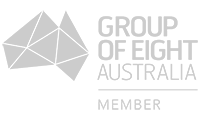SSO Update
Published in the RSAA Lunations
Vol1 Issue19 1–31 August 2021
2.3m Automation
On July 25, 2021, a major event at the ANU 2.3-metre telescope occurred. While Ian Price and Jon Neilson were having a lovely dinner at the SSO lodge, the telescope was busily observing, all by itself. While keeping a close eye on the weather, the telescope slewed to targets, set up WiFeS, acquired guide stars, and took data. Once it started reading out the detector, it slewed to the next target. It did this for about 30 minutes.
This is a major milestone for the 2.3m automation project, but much work remains. The observation preparation tools, a refactored WiFeS data reduction pipeline, the installation of a DIMM (Differential Image Motion Monitor) and much testing all still need to occur.
A photo of the 2.3-metre control room during robotic operations
Paradise Gully
For those of you who enjoy walking, there is no better walk at SSO than Paradise Gully. A wonderful description of the walk can be found in David Allen’s guide of walks in the Warrumbungle Mountains. However, be warned, you need to be fit before attempting the walk, and you will need to carry a GPS, as there are no tracks.
David worked at the AAO when it was jointly operated by the British and Australian governments and was a keen bushwalker. Later this year, we will officially re-open the David Allen trail at SSO which goes from the Lodge to the top of the mountain. When visiting SSO, consider walking along the David Allen trail, and reading the signs that will be set up along the trail.
A video of one of the many cascades and waterfalls along Paradise Gully.
Aluminising Mirrors from a Telescope in Antarctica
SSO were asked by the Clément Fillietroz-ONLUS Foundation to clean and potentially re-aluminise mirrors from their telescope in Antarctica. Following some initial discussions, the three mirrors (worth approx. AUD $1M) from the IRAIT ITM telescope (located on Dome C, 3,230m on the Antarctic plateau) arrived at the SSO.
The IRAIT ITM telescope (located on Dome C on the Antarctic plateau)
Following our failure to sell the mirrors on eBay, but success in putting a contract in place and some big delays due to COVID, SSO set about cleaning the mirrors and measuring their reflectance.
Despite the mirrors coming from an extreme, but pristine, environment (average temperature range from -34 °C to -66 °C across the year), they were in remarkably good condition. They have been in service in the telescope since 2013 and have never previously been re-aluminised. A dry air clean, then non-contact wet clean and contact wet clean was completed.
Picture of the Primary Mirror before and after the cleaning.
The reflectance went from an average 80% before to 83% after the cleaning. They were some tiny marks on the mirror and very minor delamination at the edges, but nothing that obviously required addressing.
Given that the mirrors are coated, the recommendation was not to aluminise so as to keep the protective coating. Discussions on the next steps are currently underway with the Italian team.
The SSO team did a great job in handling these mirrors from their packing cases and completing the delicate cleaning processes. Thanks also to the KMT team for the loan of their reflectometer rather than using SSO’s random number generating reflectometer.
Chris Lidman






